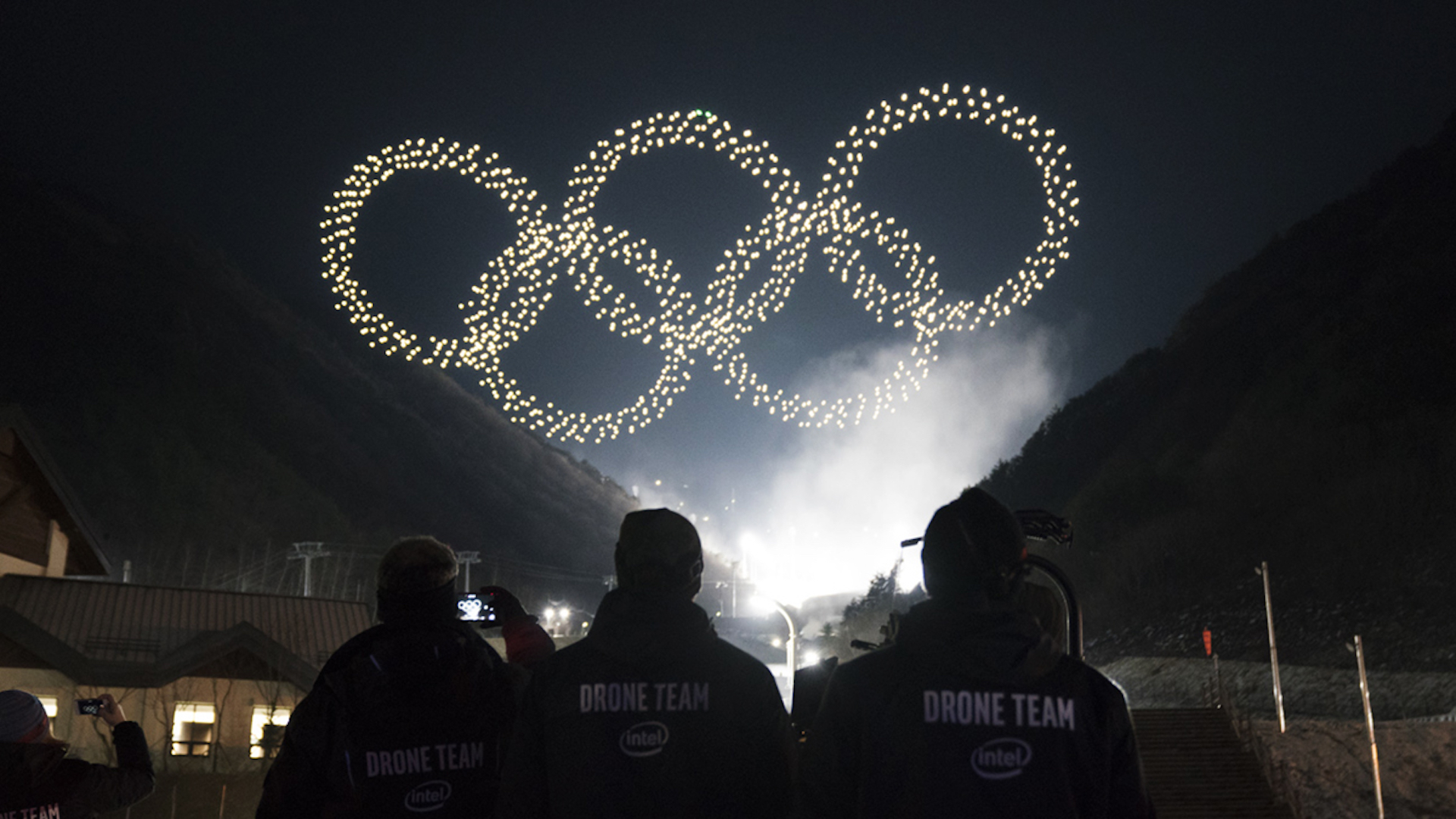

Intel’s Shooting Star drones provided a dazzling aerial display during the 2018 Olympics opening ceremony Friday. While the synchronized 1,218 unmanned aerial vehicles weren’t deployed live, for fears of technical issues affecting the integrity of the event, the prerecorded event was still quite impressive. The LED-fitted drones formed shapes such as snowboarders and the Olympic rings, thanks to the programmable synchronization technology pioneered by Intel. According to Intel itself, the advanced drone tech employed at the 2018 Pyeongchang Games will remain a vital component of the Olympics through 2024.
The Shooting Star drones themselves are fitted with LED lights and were exclusively designed for performance and entertainment purposes, capable of creating a wide variety of color combinations and extensively programmable regarding the shapes, animations, and choreography required
Intel certainly seems to top itself with every subsequent light show it orchestrates. In 2016, the company set a mark recognized by the Guinness World Records by coordinating a fleet of 500 UAVs, and just last month, set another one at CES for flying 100 Shooting Star Mini drones indoors from a single computer. Of course, the company has also provided its visual flair to numerous musical performances like Lady Gag’s halftime show. On Friday, Intel’s stage was the world with its prerecorded 1,218 Shooting Star world record-setting light show in Pyeongchang, South Korea drawing 28.3 million viewers from across the globe.
Here’s what an Intel Shooting Star Winter Olympic Games opening ceremony looks like.

According to The New York Times, Intel initially planned on deploying 300 drones as part of a live event at the opening ceremony, but an “impromptu logistical change” made the International Olympic Committee think twice hence, the prerecorded version you see above, which was filmed in December. Nonetheless, Intel set a Guinness World Record for “most unmanned aerial vehicles airborne simultaneously,” and wowed almost 30 million people simultaneously. That’s pretty damn cool, and a promising sign of how much more complex and sophisticated this technology can make light shows in the future.
Regarding the set and setting, Natalie Cheung, general manager of Intel’s drone light show team, said, “The Olympics are a time when the sports and entertainment industries are buzzing with record-setting performances, so it was the perfect stage for Intel Shooting Star drones and our team to set their own kind of record.”
While light shows might not be the reason most of us got into the field of recreational drone piloting, they certainly impress upon us how rapidly technology is advancing and what we, the consumers, may be able to access at some point in the future. “We are honored to have Intel drones playing several roles at the Olympic Games,” said Vice President and General Manager of the Intel Drone Group, Anil Nanduri.